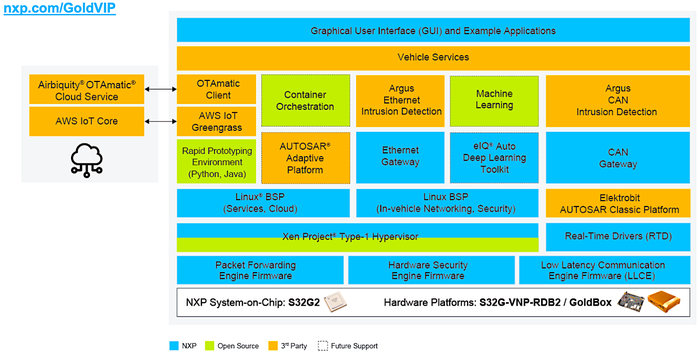Consolidation of Processors Depends on Software-Defined Vehicle Development
NXP says that we will see chip consolidation in cars accelerate in 2024.

Carmakers are anxious to simplify, reduce cost, and reduce supply-line exposure by replacing the vast number of processors in today’s cars with a handful of chips that run all the car’s systems. That’s according to NXP global director of vehicle control and networking solutions, Brian Carlson.
“There is so much going on right now in automotive design moving toward new types architectures,” he said. “From a hardware point of view, you can’t keep adding boxes. It doesn’t scale and it doesn’t add value.”
Instead, carmakers will use fewer processors running software to control the vehicles’ various functions. “They will collapse today’s 150 boxes into a handful of boxes that are easily software updatable,” he said. “We’ll see a massive shift of how these vehicles are designed, and 2024 is where it starts to pick up.”
One example of the consolidation of these chips is the infotainment system introduced in the latest Ford models, according to Carlson. “Ford announced they are using this tech for all new vehicles, including the F-150 and Mach-E,” he said. The technology is a single-chip evolution of a previous system that used a pair of NXP processors. “There are multiple generations of the technology,” he said. “We initially had a two-chip solution and that converged into a one-chip solution.”
The systems’ functions are indistinguishable from one another regardless of the underlying hardware, Carlson said. In fact, he pointed out that his personal Ford Edge was built with the previous two-chip hardware, but it will enjoy all of the benefits from future over-the-air updates as the newer single-chip-equipped vehicles.

NXP provides the processing chips that suppliers such as Bosch and Continental incorporate into their subsystems rather than selling chips directly to carmakers. These suppliers need to be able to evaluate and program NXP’s chips, so that is the focus of its new S32G GoldVIP program.
The “VIP” stands for “Vehicle Integration Platform” and NXP touts its ability to address customer needs such as vehicle networking, cloud connectivity, over-the-air updates, and network security.
Another key feature is a processor that can be divided internally by software to simulate dedicated processors for various functions, said Carlson. “You will have virtual ECUs from Tier 1s on the same chip where they are isolated from each other,” he said.
NXP’s software-defined vehicle development provides for speedy development for the Tier 1 companies using NXP processors. Indeed, NXP promises that these customers can set up and test S32G silicon in only ten minutes. Testing the software-defined vehicle brings new speed to the development process, said Carlson. “Customers get something tested, validated, and optimized,” he said. “GoldVIP raises the bar for silicon software enablement to address the needs of software-defined vehicles and to provide a scalable platform for rapid development of new vehicle services.”
About the Author(s)
You May Also Like





